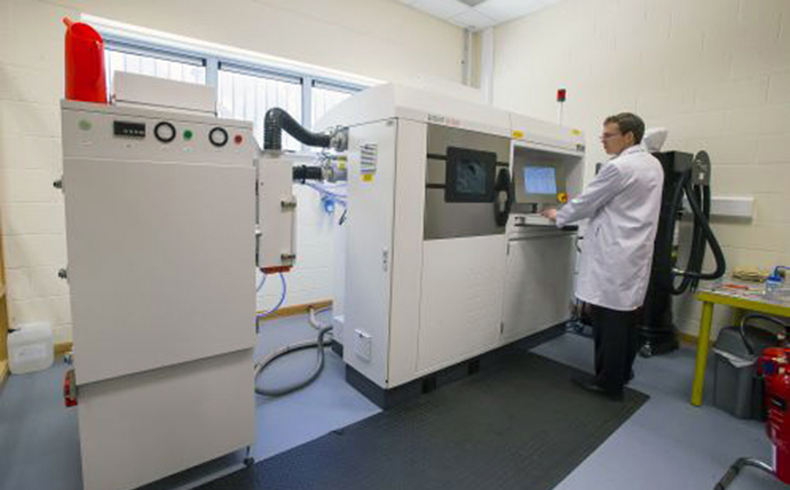3D additive manufacturing – how it works
3D additive printing is changing how manufacturing of engineering components will be achieved – not just in future but for applications today. The additive manufacturing process commences with a 3D digital image from a newly generated CAD software design or a digital scan of an existing component. A computer file is then generated that slices this image into cross sectional layers that are sent to the additive manufacturing machine that creates the component using a layer upon layer selective deposition technique.
A disruptive technology
What makes this manufacturing process so disruptive is the design freedom it allows, creating the capacity to manufacture complex component shapes with internal geometries and infrastructure which could not be replicated using conventional subtractive processes, which successively removes material across all three axes using CNC machines. It also creates the opportunity to completely change the supply chain management and distribution network for engineering components, bringing the manufacturer closer to the customer. Digital files will be distributed to regionalised additive manufacturers near their customers, capable of manufacturing a wide range of products on demand without the need for retooling – eliminating the need for large inventories of products and spare parts.
SEAM 3D metal additive manufacturing capability
In the SEAM Gateway, our mission is help translate the potential of 3D metal additive manufacturing technologies to Irish companies. The Gateway has, on site in Waterford, an EOSINT M 280 which is based on the innovative DMLS (Direct Metal Laser Sintering). It is equipped with a 200 W fibre laser which melts fine metal powder and builds up the product, layer by layer. This method allows you to create products with extremely complex geometries including elements such as free-form surfaces, deep slots and coolant ducts.
Which industry sectors use 3D additive manufacturing
Because 3D metal additive manufacturing is an emerging technology with slower unit fabrication times and higher capital equipment costs than traditional methods, the early adaptors have been typically been one off high value added components. Examples of this include tooling for injection moulding where the optimised design of internal cooling channels greatly enhance productivity. The capacity to produce complex customisable components is of particular interest to value-added sectors such as:
- Bio-medical devices where implantable devices can be customised to the patients offer huge potential, for example orthodontics and orthopaedic applications
- Aerospace where the reduction in the size and number of constituent parts can yield significant weight savings and resulting lower fuel costs
- Automotive industries with high-end specialised automobiles such as F1 engine parts
The technology challenges
There are significant technical challenges which need to be surmounted in order to widen the range of use and performance of 3D metal additive printed components and devices including:
- A wider range of materials that can be used.
- A greater understanding of material properties such as particle size, distribution, morphology and purity of the metal powder used in the additive process and the impact this has on machine process parameters, component density, reliability and surface finish.
- Heat treatment techniques post processing to increase strength and hardness of the device by reducing residual stresses created by the additive layer process.
- Enhanced capabilities in 3D digital design, delivering more complex customised solutions
How SEAM can help Irish companies
SEAM is uniquely placed within the Irish research infrastructure to address these issues and practically apply solutions relevant to the Irish manufacturing industry because of its high level of industry engagement and its wide range of materials engineering expertise and in-house reliability and characterisation tools. These include a suite of x-ray micro tomography, 3D finite element design capability, SEM, mechanical strength and hardness testing that can be utilised in combination to optimise and reduce the design cycle time from concept to a functioning prototype.
SEAM, in partnership with its sister Gateways in the Technology Gateway Network, including APT which specialises in polymer processing technologies, is focussed on practically applying the emerging 3D additive manufacturing technology innovations to Irish industry. The core objective will be to generate exciting new products and capabilities for 21st century Irish engineering and manufacturing sectors.
About the author

Dr. Ramesh Raghavendra M.Sc., M.S., Ph.D., M.B.A
SEAM Technology Gateway Manager
051 845 648 / 087 966 8547
